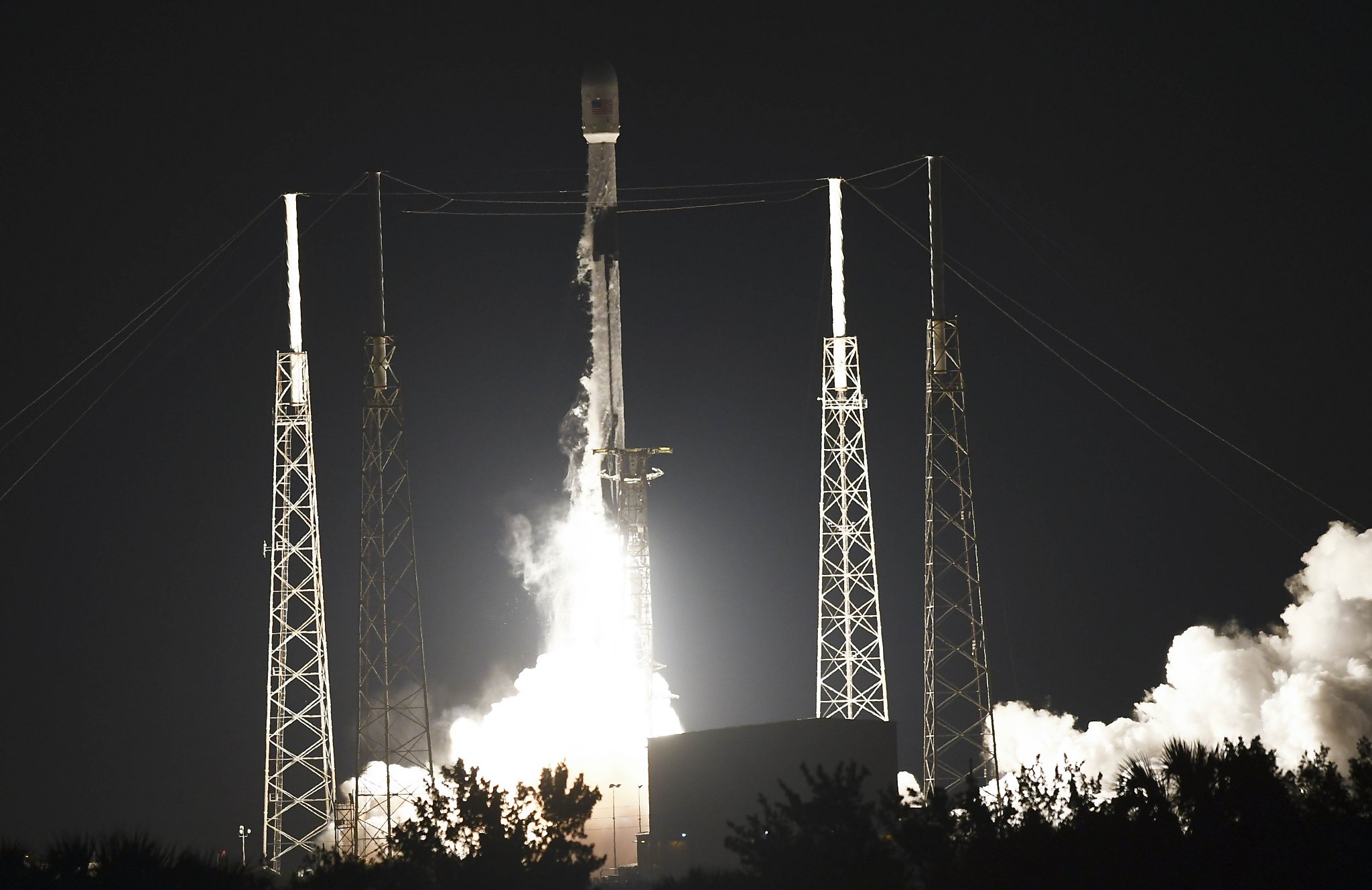No, those strange lights seen over Bay Area aren’t UFOs. Here’s what experts say is going on

Some Bay Area residents were startled Saturday evening to see a mysterious row of bright lights gliding across the sky.
But they were not UFO sightings. Rather, it seems most likely they were a chain of Starlink satellites, part of a program being developed by Elon Musk’s SpaceX company to provide high-speed internet access to people living in remote areas.
Residents across the Bay Area from Oakland to San Francisco, Redwood City to San Jose, reported the bright lights Saturday night.
Paul Lynam, a resident astronomer at Lick Observatory on Mount Hamilton near San Jose, said that the Starlink cluster was most likely from the March 9 launch “catching and reflecting sunlight either in the couple hours after sunset or before sunrise.”
“Such sightings are becoming more common as SpaceX continues to populate its constellation apace,” he said.
On May 15, SpaceX launched its latest wave of 52 satellites from Kennedy Space Center in Florida. The company has now launched more than 600 of its 12,000 planned satellites, usually set off in batches of 60. They are known as “megaconstellations” because they are a group of satellites moving together, and as they increase in numbers, they can affect astronomical observations.
Geoff Mathews, a professor of astronomy at Foothill College in Los Altos Hills, agreed that the satellites Saturday appeared to be from the L27 launch in the early morning hours of May 9.
“These should have been easily visible from the San Francisco Bay Area last night from about 9:38 to 9:49, passing almost directly overhead,” he said. “They would have been just a little bit fainter than Polaris, the pole star.”
The estimate from Mathews is based on calculations from Heavens Above, a website that provides reliable satellite tracking information. Mathews said according to the website, “A chain of 10 should be visible again tonight from about 9:06 to 9:13, passing from the SW to the NE and passing pretty high overhead.”
“When the satellites are released from the rocket that carried them to orbit, they will all be moving in roughly the same direction, and thus appear to be moving in a line,” Mathews said. “Over time, thanks to slight differences in their motions, they will spread out and join in with the cloud of satellites orbiting the Earth.”
He said satellites from previous launches have already spread out so they can provide constant internet connections to all of their designated locations.
“Typically, as time passes after launch, the clusters become less noticeable,” Lynam said.
Raja GuhaThakurta, department chair of astronomy and astrophysics at UC Santa Cruz, said while these particular satellites are meant to be good for human society, their potential effect on astronomical observations is a major concern. The satellite surfaces are often made with highly reflective material, and they can interfere with radio astronomy frequencies.
GuhaThakurta said astronomers “are rapidly moving into a phase of study of the universe that has to do with the dynamic universe, not the static universe,” and looking at the “changing sky.”
“You throw into that mix a constellation of satellites like that, and all of sudden you’ve got human interference to these studies, which is a downside for astronomy,” he said. “This is not unlike when we light our cities. We are doing it for human safety and doing this for human convenience, but it also has a cost and damages our view of the night sky.”
Mathews said the impact of Starlink is pretty staggering: It will multiply by sixfold the number of satellites in low orbit around Earth, currently about 2,000. And with thousands of other satellites planned from other companies, the increase presents a “very real challenge for astronomical research.”
“Even when they are not bright enough to be seen with the human eye, they are bright enough to interfere with many research observations,” he said. “The more bright satellites are orbiting the Earth, the more difficulty astronomers will have in working around the interference.”
Kellie Hwang is a San Francisco Chronicle staff writer. Email: kellie.hwang@sfchronicle.com Twitter: @KellieHwang
*** This article has been archived for your research. The original version from San Francisco Chronicle can be found here ***

